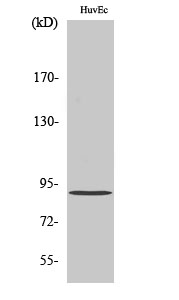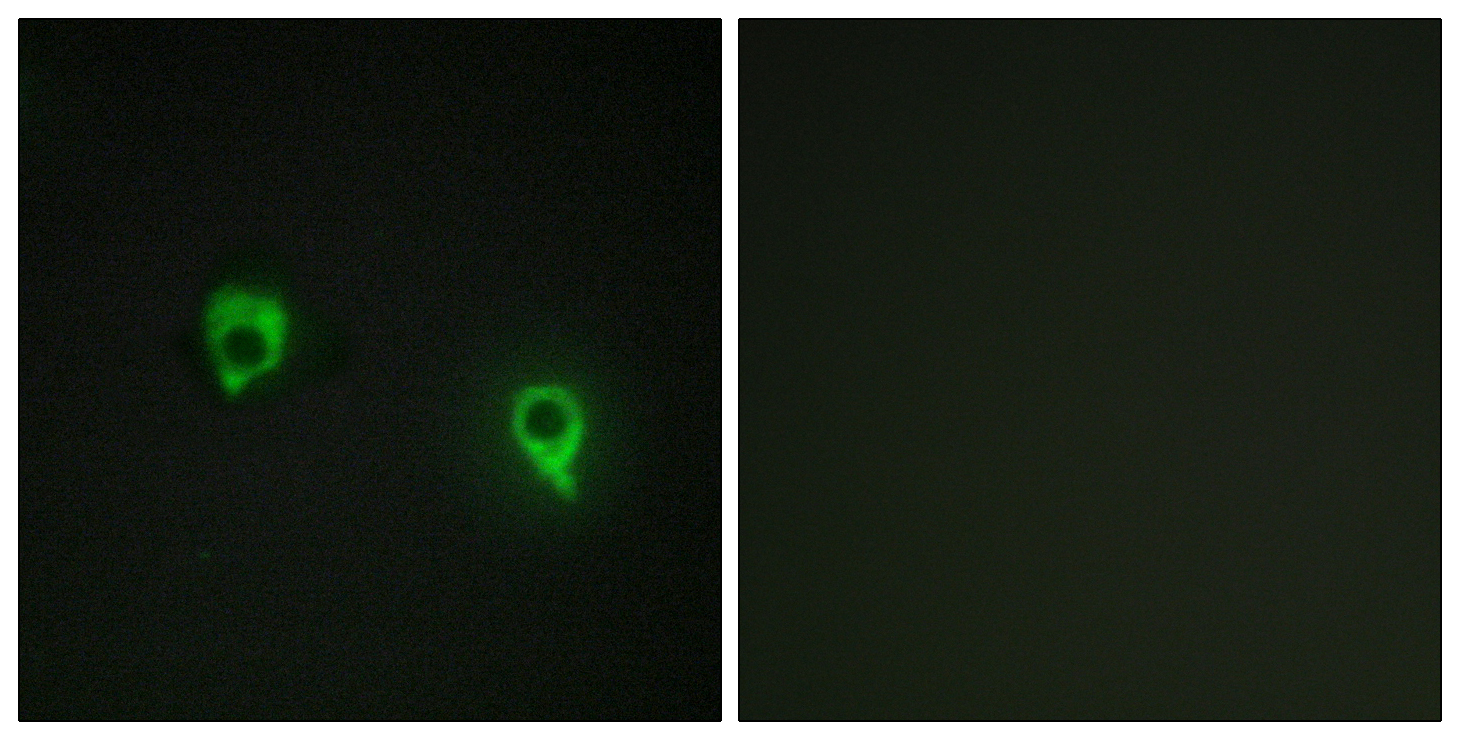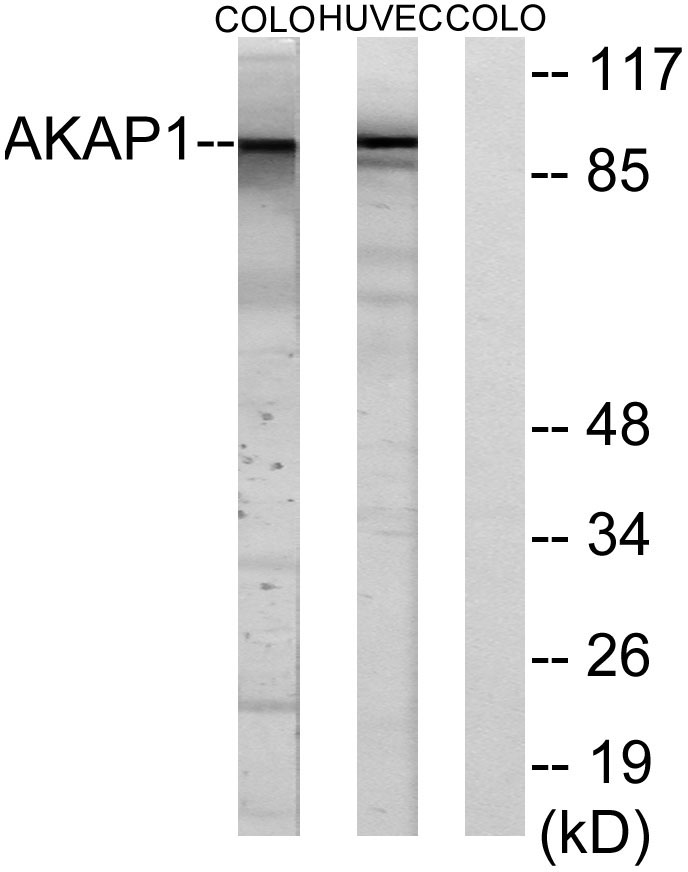AKAP 149 Polyclonal Antibody
- Catalog No.:YT0163
- Applications:WB;IHC;IF;ELISA
- Reactivity:Human;Rat;Mouse;
- Target:
- AKAP 149
- Gene Name:
- AKAP1
- Protein Name:
- A-kinase anchor protein 1 mitochondrial
- Human Gene Id:
- 8165
- Human Swiss Prot No:
- Q92667
- Mouse Swiss Prot No:
- O08715
- Immunogen:
- The antiserum was produced against synthesized peptide derived from human AKAP1. AA range:281-330
- Specificity:
- AKAP 149 Polyclonal Antibody detects endogenous levels of AKAP 149 protein.
- Formulation:
- Liquid in PBS containing 50% glycerol, 0.5% BSA and 0.02% sodium azide.
- Source:
- Polyclonal, Rabbit,IgG
- Dilution:
- WB 1:500 - 1:2000. IHC 1:100 - 1:300. IF 1:200 - 1:1000. ELISA: 1:5000. Not yet tested in other applications.
- Purification:
- The antibody was affinity-purified from rabbit antiserum by affinity-chromatography using epitope-specific immunogen.
- Concentration:
- 1 mg/ml
- Storage Stability:
- -15°C to -25°C/1 year(Do not lower than -25°C)
- Other Name:
- AKAP1;AKAP149;PRKA1;A-kinase anchor protein 1; mitochondrial;A-kinase anchor protein 149 kDa;AKAP 149;Dual specificity A-kinase-anchoring protein 1;D-AKAP-1;Protein kinase A-anchoring protein 1;PRKA1;Spermatid A-kinase anchor prot
- Observed Band(KD):
- 90kD
- Background:
- The A-kinase anchor proteins (AKAPs) are a group of structurally diverse proteins, which have the common function of binding to the regulatory subunit of protein kinase A (PKA) and confining the holoenzyme to discrete locations within the cell. This gene encodes a member of the AKAP family. The encoded protein binds to type I and type II regulatory subunits of PKA and anchors them to the mitochondrion. This protein is speculated to be involved in the cAMP-dependent signal transduction pathway and in directing RNA to a specific cellular compartment. [provided by RefSeq, Jul 2008],
- Function:
- domain:RII-alpha binding site, predicted to form an amphipathic helix, could participate in protein-protein interactions with a complementary surface on the R-subunit dimer.,function:Binds to type I and II regulatory subunits of protein kinase A and anchors them to the cytoplasmic face of the mitochondrial outer membrane.,similarity:Contains 1 KH domain.,similarity:Contains 1 Tudor domain.,tissue specificity:AKAP149 is highly expressed in prostate and small intestine whereas S-AKAP84 is expressed in kidney, pancreas, liver, lung and brain. AKAP149 is also expressed in colon carcinoma.,
- Subcellular Location:
- Mitochondrion outer membrane . Mitochondrion .
- Expression:
- Isoform 1 is detected in thymus, prostate, testis, ovary, colon and small intestine (PubMed:8769136). Isoform 2 is highly expressed in testis and detected at much lower levels in kidney, pancreas, liver, lung and brain (PubMed:7499250).
- June 19-2018
- WESTERN IMMUNOBLOTTING PROTOCOL
- June 19-2018
- IMMUNOHISTOCHEMISTRY-PARAFFIN PROTOCOL
- June 19-2018
- IMMUNOFLUORESCENCE PROTOCOL
- September 08-2020
- FLOW-CYTOMEYRT-PROTOCOL
- May 20-2022
- Cell-Based ELISA│解您多样本WB检测之困扰
- July 13-2018
- CELL-BASED-ELISA-PROTOCOL-FOR-ACETYL-PROTEIN
- July 13-2018
- CELL-BASED-ELISA-PROTOCOL-FOR-PHOSPHO-PROTEIN
- July 13-2018
- Antibody-FAQs
- Products Images

- Western Blot analysis of various cells using AKAP 149 Polyclonal Antibody diluted at 1:2000

- Immunofluorescence analysis of COS7 cells, using AKAP1 Antibody. The picture on the right is blocked with the synthesized peptide.

- Immunohistochemistry analysis of paraffin-embedded human brain tissue, using AKAP1 Antibody. The picture on the right is blocked with the synthesized peptide.

- Western blot analysis of lysates from HUVEC and COLO cells, using AKAP1 Antibody. The lane on the right is blocked with the synthesized peptide.



